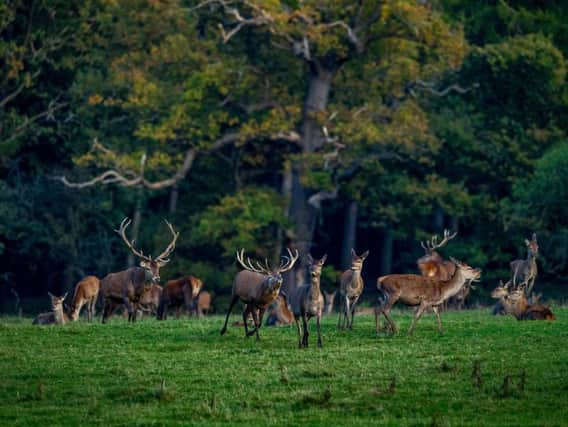Why stag rutting season among Harewood House deer is a spectacular Autumn sight


The breeding season for Red Deer occurs from the end of September to November each year and sees stags, like these pictured at the Harewood House estate in Leeds, compete for the attention of hinds - the females.
Their elaborate displays of dominance include roaring and chasing rivals and those in competition have been seen to lock antlers and fight in a head-to-head battle for supremacy and a mate.
Advertisement
Hide AdAdvertisement
Hide AdRoll up for your close encounter of the herd kindGiant, and testosterone fuelled, the stags can pay high prices, with some fierce ruts leading to serious injury or even death.
The reward though is great. According to the British Deer Society, the dominant Red Deer stag emerges victorious and ensures exclusive mating with the hinds. The losers are left licking their wounds.
Come mid-May to mid-July, calves are birthed, following an eight month gestation period. In woodland populations, Red Deer hinds over one year old give birth to a single young.
The species is one of three types of deer that are spread over 4,000 acres of land at the Harewood Estate, near Leeds.
Advertisement
Hide AdAdvertisement
Hide AdWith a deer park since the medieval era, the site is also home to Roe and Fallow Deer.
Country & Coast: Fallow deerThe Red Deer is one of the largest species and successful reintroduction and conservation efforts, particularly in the UK, have resulted in an increase in their population.
They are a distinctive rusty red colour in summer but their coat turns more brown during the winter months.
For the stags, antlers are one of the species’ most distinguishing features, highly branched and increasing with age. They are cast during March and April, then re-grown and fully formed by September.
Their dramatic ruts have been witnessed in Britain for decades. But whatever the time of year, seeing these majestic creatures roam the land is quite the sight.